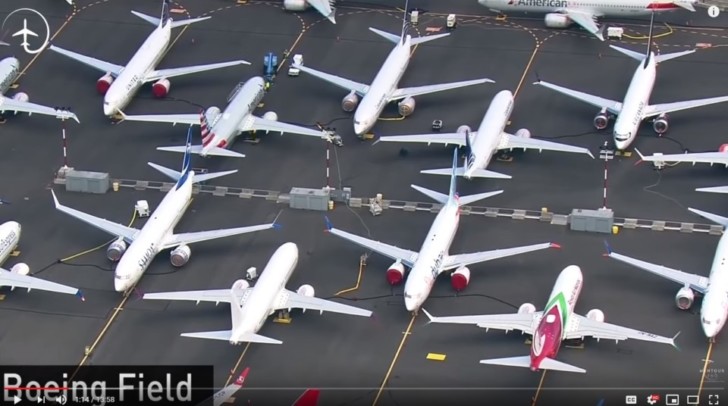It’s like a song that never stops playing, Boeing again has another problem with the 737MAX. The good news is that it has nothing to do with the flight management system problems like MCAS. The bad news is there is evidence of serious quality of workmanship issues. The new problem is the discovery of Foreign Object Debris (FOD) found in 737 MAX fuel tanks.

This new problem has nothing to do with new technology or even with technology at all. This is a case of sloppy workmanship during construction and this is not the first Boeing aircraft program to have construction debris in its aircraft. These problems were found in completed aircraft that had been parked for months and not newly constructed aircraft since production is on hold.
Debris Can Be Deadly
Fuel or engine contamination by debris or FOD sucked up on the taxiways or runways can cause engine damage that could lead to complete engine failure. Unlike your car, an aircraft just can’t pull over in the sky and wait for a tow from AAA. External contamination is due to environmental causes. Internal fuel contamination is localized within the aircraft itself.
Like a surgical suite in a hospital, an aircraft fuel system must be pristine in its cleanliness and continuity. Beginning with aviation fuels, these fuels whether jet fuel or avgas are produced to meticulous standards. They are transported to airports in dedicated tanker trucks that should carry nothing other than aviation fuels. The fuels are tested many times from refinery to airport fuel dispenser for the presence of water and debris. When your airliner is being refueled, you have every right to expect that the fuel on your aircraft is as pure and clean as possible.
This revelation is very concerning because there are a series of pipes, valves and pumps that move the fuel from tank to engine and tank to tank. These systems could be clogged or damaged depending on the size and quantity of debris in the fuel system. Getting debris out of a fuel system is a complicated and time-consuming task.
I fly a Cessna 182 which I fuel myself. When I fuel the aircraft at night, I need to use a flashlight to correctly see the fuel level. I keep my flashlight on a lanyard so if I drop my flashlight, I can pull it out immediately.
Boeing Employee Notification
Mark Jenks, vice president and general manager of the 737 program in Renton, WA had this to say to 737 employees:
“Foreign object debris, referred to as FOD, is absolutely unacceptable. One escape is one too many. With your help and focus, we will eliminate FOD from our production system”.
“During these challenging times, our customers and the flying public are counting on us to do our best work each and every day. That’s why were taking action”.
Boeing stated that it will address the problem by updating instructions and required checklists for employees, along with additional verifications including inspections and audits.
This Is Not A New Problem With Construction Debris Issues
The first time that Boeing was called out for construction debris was on newly delivered KC-46 air refueling tankers to the U. S. Air Force. The Air Force on two occasions, halted delivery of the tankers twice last year after debris was found in closed compartments of the aircraft.
A “whistleblower” complaint at the 787 factory at Charleston, SC led to a quality control investigation at the plant. Again, construction debris was an issue. There was an incident in 2010 where Boeing admitted that debris likely was the cause of a short circuit or electrical arc in a power distribution pane aboard a 787 Dreamliner. This caused onboard electrical fires that led to the ground of that jet for several months.
What has happened to the quality control culture at Boeing? Leaving construction debris in an aircraft is plain sloppy workmanship. Maybe it is just laziness. Who is inspecting to work after system completion and are they complicit in a declining safety culture?
Final Thoughts
I have flown every Boeing jetliner since the 707 so I have no axe to grind with Boeing. With that said, I am coming down hard on Boeing for both serious construction and quality control issues. Before stopping production of the 737MAX, they had ramped up the production rate to an extremely high level. This meant that people were working a lot of overtime and may have contributed to employee fatigue and workplace sloppiness. There are no shortcuts when safety is involved.
Boeing needs to get its act together and get off the self-destruct merry-go-round. They can’t afford to lose either customer or passenger confidence in their products. Too many issues they are facing are self-inflicted and lead me to question – who is at the wheel at Boeing?

